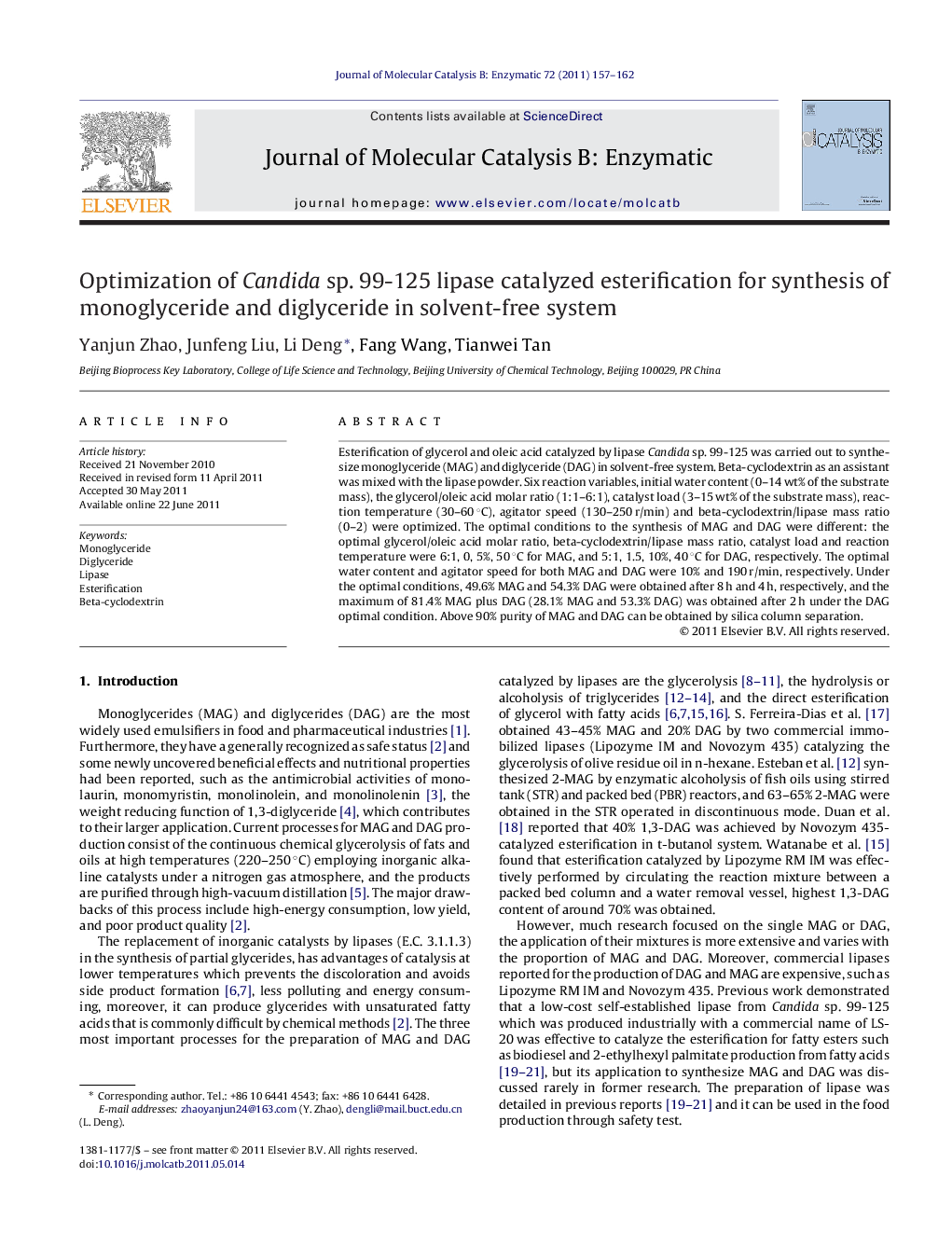| Article ID | Journal | Published Year | Pages | File Type |
|---|---|---|---|---|
| 70177 | Journal of Molecular Catalysis B: Enzymatic | 2011 | 6 Pages |
Esterification of glycerol and oleic acid catalyzed by lipase Candida sp. 99-125 was carried out to synthesize monoglyceride (MAG) and diglyceride (DAG) in solvent-free system. Beta-cyclodextrin as an assistant was mixed with the lipase powder. Six reaction variables, initial water content (0–14 wt% of the substrate mass), the glycerol/oleic acid molar ratio (1:1–6:1), catalyst load (3–15 wt% of the substrate mass), reaction temperature (30–60 °C), agitator speed (130–250 r/min) and beta-cyclodextrin/lipase mass ratio (0–2) were optimized. The optimal conditions to the synthesis of MAG and DAG were different: the optimal glycerol/oleic acid molar ratio, beta-cyclodextrin/lipase mass ratio, catalyst load and reaction temperature were 6:1, 0, 5%, 50 °C for MAG, and 5:1, 1.5, 10%, 40 °C for DAG, respectively. The optimal water content and agitator speed for both MAG and DAG were 10% and 190 r/min, respectively. Under the optimal conditions, 49.6% MAG and 54.3% DAG were obtained after 8 h and 4 h, respectively, and the maximum of 81.4% MAG plus DAG (28.1% MAG and 53.3% DAG) was obtained after 2 h under the DAG optimal condition. Above 90% purity of MAG and DAG can be obtained by silica column separation.
Graphical abstractMonoglyceride (MAG) and diglyceride (DAG) were synthesized using Candida sp. 99-125 lipase catalyzed the esterification between glycerol and oleic acid without solvent in a stirred-tank reactor. Six reaction variables including initial water content, the glycerol/oleic acid molar ratio, catalyst load, reaction temperature, agitator speed and beta-cyclodextrin/lipase mass ratio were optimized, and then reactant was separated by silica column.Figure optionsDownload full-size imageDownload as PowerPoint slideHighlights► Low-cost self-established lipase powder from Candida sp. 99-125 was successfully applied to the esterification of glycerol and oleic acid in solvent-free system to produce monoglyceride and diglyceride. ► It is proved that beta-cyclodextrin plays a significant role in the esterification catalyzed by the lipase to produce monoglyceride and diglyceride. ► Two different optimum conditions have been obtained for monoglyceride and diglyceride, which can be used to control the proportion of MAG and DAG in the reaction.
